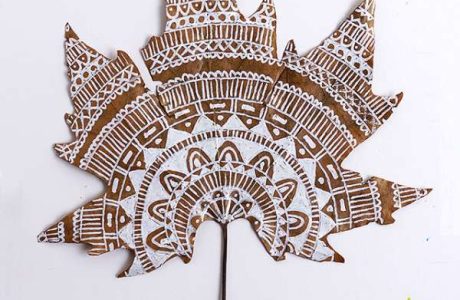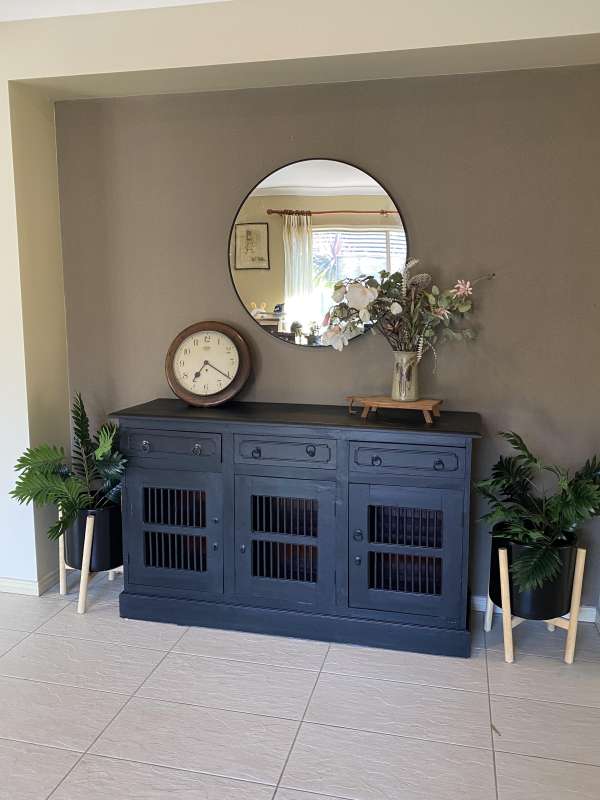
Life is a series of chapters, each marked by distinct moments that shape our journey. One such chapter, often accompanied by a sense of introspection and the quest for renewal, is the midlife crisis, Yep, I think that s what I am currently experiencing.
It’s a period that beckons us to reassess our choices, recalibrate our goals, and reimagine our lives. For many, this transformation extends beyond the realm of the self and extends into our surroundings – our homes, to be precise.
As midlife arrives, a subtle whisper resonates within us, urging change, and calling for a fresh perspective on the spaces we inhabit. The furniture that once offered comfort and familiarity might now seem like relics of a different era, plus I realized I have had the same furniture for over 15 years.
Thus begins the journey of a midlife DIY furniture transformation – a journey of aligning our living spaces with our evolving selves. In this article, we delve into the intimate details of this transformative process, exploring the emotions, decisions, and creative avenues that come together to breathe new life into our homes. Join us as we navigate the realms of nostalgia, budget considerations, and the sheer joy of recreating our living spaces.
Mixing Old and New
Balancing old and new furniture and decor was a crucial aspect of my transformation, as I could not afford to replace all my furniture. Instead of replacing everything, I carefully selected a few key pieces that harmonized with my new vision. The challenge was to create a cohesive aesthetic that embraced change while honoring the past. My main vision was Dark and moody with a clean aesthetic. Our house is 80’s Cream, so I plan to paint the walls white to “clean” up the space. So dark and moody needs to come from the furniture and not the walls.
Photos Tell the Story
[before-and-after photos]
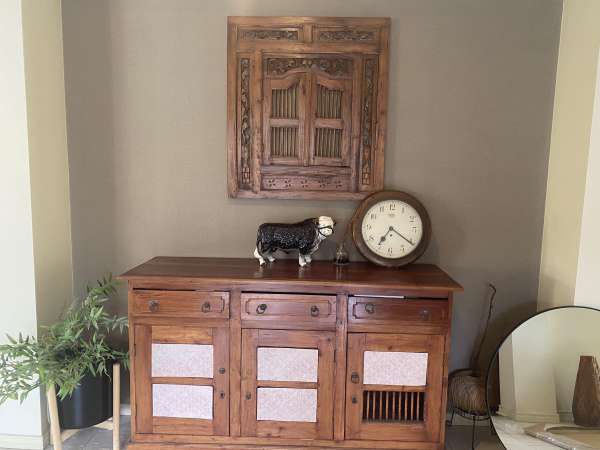

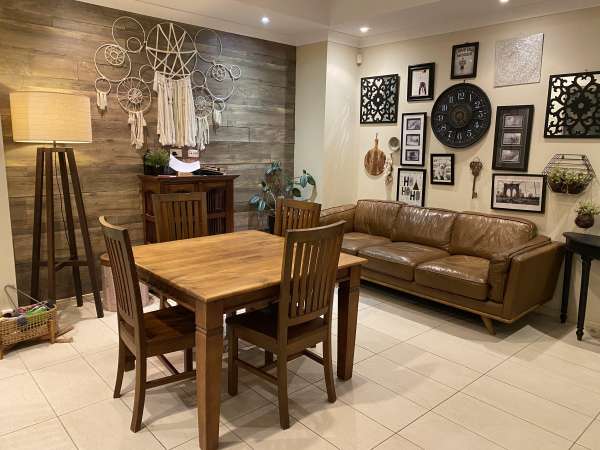
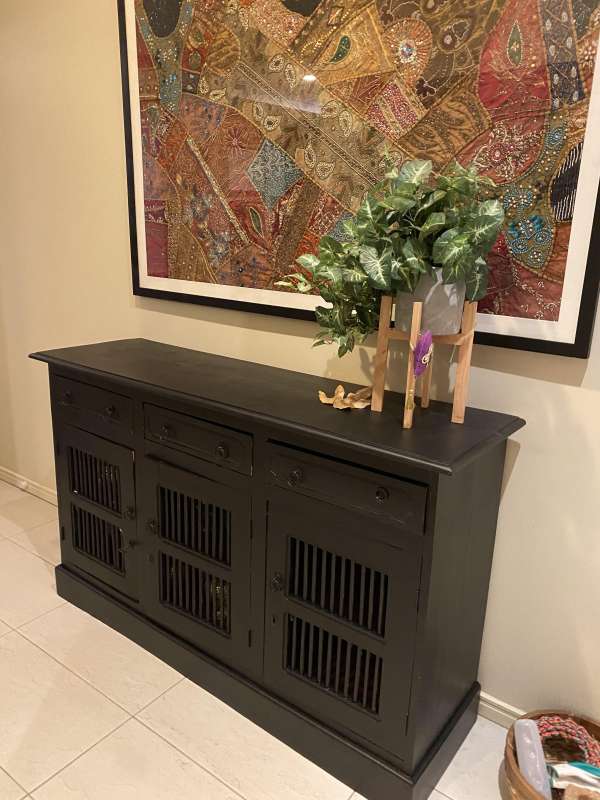
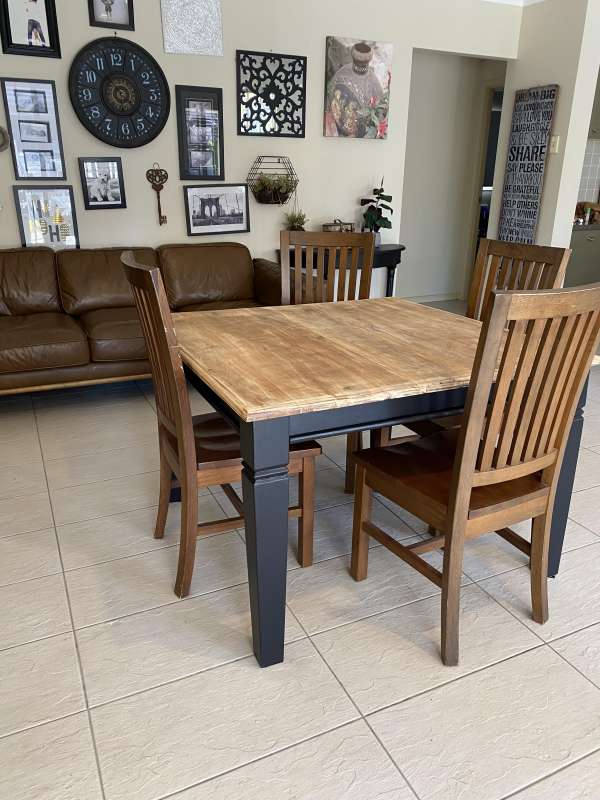
Some new Wishbone chairs are due to arrive any day now.
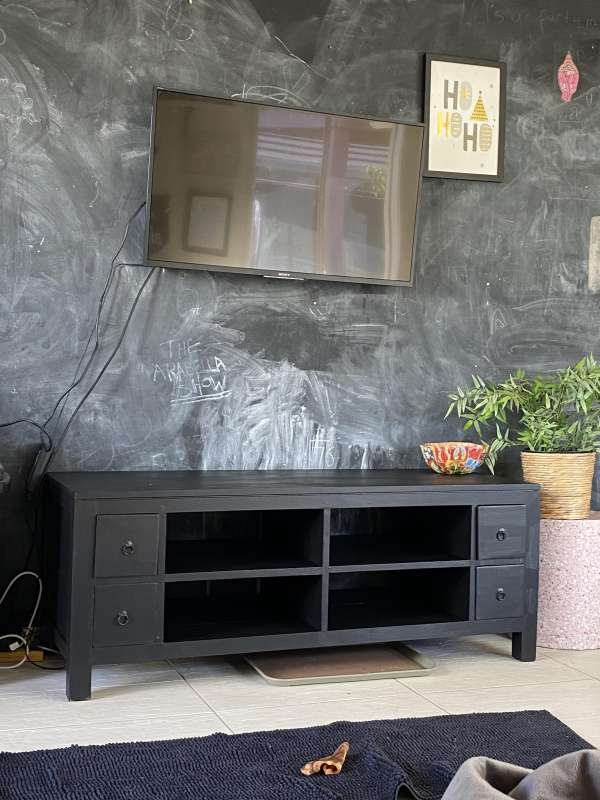
The Power of Budget Creativity
Limited finances pushed me to think outside the box. I found joy in giving a fresh coat of paint to a tired table. I liked a few key pieces in a store and set out to transform my old pieces into something similar. I figured what did I have to lose? If I didn’t like them I was only down a tin of paint.
The transformation wasn’t just physical; it was a shift in mindset that helped me value the beauty in simplicity and creativity.
Embracing the Journey
The midlife crisis that led me to transform my furniture turned out to be a transformative experience on a deeper level. It reminded me that change is an inevitable part of life, and our surroundings should reflect our growth. With a modest budget, a dash of creativity, and a willingness to embrace change, my home became a reflection of my present and a celebration of the future.
Embracing a midlife crisis isn’t about falling into a rut, but rather a chance to reinvent ourselves and our surroundings. My budget-conscious furniture transformation journey has taught me that change doesn’t have to be extravagant – it can be a journey of introspection, creativity, and resourcefulness. As I look around my revamped living space, I see not just furniture but a reflection of my evolution, a tangible representation of the beautiful transformation that comes with embracing change, even on a budget.
So now that I had made everything NEW again, it was time to bring in some Old.
In the ever-evolving realm of interior design, there’s an enduring charm in creating a home that not only mirrors your style but also chronicles your journey and the tales you wish to share. Irrespective of whether you boast a long lineage or are forging your own, incorporating history into your home decor can add an unmatched dimension.
For many, the allure of family heirlooms isn’t about the price tag but the connection to generations past. However, not everyone can trace their lineage back centuries. Yet, the desire to infuse history into our living spaces remains a universal sentiment.
While mass-produced replicas have their charm, there’s something inherently profound about surrounding ourselves with pieces that embody the past and reflect a genuine narrative so thus began my journey through Antique stores, second-hand booths and Online sellers.
My own quest for history-infused decor began with a curiosity about my family’s roots. Delving into old albums, I uncovered photographs of my grandparents’ wedding, capturing a world that seems so distant yet resonates with my own identity. That photograph now rests atop an antique wooden chest, inviting conversations about traditions and stories that have woven my family’s narrative.
In my living room, an intricately beaded framed throw showcases my travels through Southeast Asia. Its intricate patterns mirror the temples I explored, the cultures I embraced, and the memories I cherish. This single piece encapsulates my wanderlust and love for the authentic and made modern by placing into a frame.
Crafting a Narrative Through Decor
Picture stepping into a room where every chair, every frame, every ornament holds a narrative that’s uniquely yours. This is the essence of embracing history in home decor. The journey commences with a shift in mindset – moving away from merely beautifying to curating a space that echoes your life’s essence.
So the main directive was to save money on upcycling my existing furniture so that I could bring in some key pieces to stand out and draw the eye.
Asia plays a large part in our household so whilst our family didn’t have any specific pieces of our own, I decided to start looking for antique pieces I could adopt to our family. Originalbuddhas.com has Buddha statues that belonged to families of yesteryear and now a few pieces belong to my family. This history is visible in the aged peices, I personally went for wood, as I wanted to bring in brown earthy tones with lots of texture (I will add some photos soon)
Here are a few of the other pieces I had my eye on too.



Curating Your Own Legacy
History-infused decor isn’t just about collecting antique objects. It’s a symphony of styles, an orchestra of emotions, and a collage of experiences. Modern pieces that pay homage to a certain era, art that evokes social movements, and personal mementos that are tokens of cherished moments – these elements contribute to the tapestry of your decor story.
Transforming Your Space: Tips for a More Detail-Oriented Decor
- Start Small: Begin with a corner or a room, allowing your collection to evolve naturally over time.
- Mix Eras: Blend eras seamlessly to create an eclectic yet harmonious ambiance. The fusion of contemporary and vintage pieces can create a dynamic visual feast.
- Tell a Story: Arrange items in clusters to form mini tableaus that narrate a story. A collection of souvenirs from travels can evoke memories of far-off places.
- Quality over Quantity: Instead of hoarding items, opt for quality pieces that resonate with your soul. A single item with a history can often outshine an array of trinkets.
- Embrace Imperfections: Imperfections tell tales of use and love. Embrace them, for they lend character and depth to your decor.
History in home decor transcends superficial aesthetics, offering a window into your life’s journey. By embracing the philosophy of “more history,” your home becomes an anthology of your experiences, values, and dreams. Each piece becomes a chapter, each corner a canvas to express your authentic self. As you curate your surroundings, remember that in the symphony of history-infused decor, you’re not just crafting a home – you’re crafting a legacy that tells a tale uniquely yours.
Is it okay to have a Buddha Statue in your home?
Actually this is something that I am asked a lot, when people find out I have other peoples antiques,
Having a Buddha statue in your home can carry a variety of meanings and significance, depending on your personal beliefs, intentions, and cultural background. Here are some common interpretations of what it can mean to have a Buddha statue in your home:
Spiritual Connection: For many, a Buddha statue represents a spiritual connection to Buddhism and its teachings. Placing a Buddha statue in your home can serve as a reminder of the Buddha’s wisdom, compassion, and enlightenment. It can be a way to foster a sense of calmness, mindfulness, and inner peace in your daily life.
Symbol of Enlightenment: The Buddha is often associated with enlightenment, the state of profound understanding and liberation from suffering. Having a Buddha statue in your home can be a symbol of your own pursuit of personal growth, self-discovery, and spiritual awakening.
Inspiration: A Buddha statue can be a source of inspiration. It can remind you to cultivate positive qualities such as compassion, kindness, and mindfulness in your interactions with others and in your daily activities.
Decorative Element: Beyond its spiritual connotations, a Buddha statue can also serve as a decorative piece in your home. Its serene and contemplative presence can add a sense of tranquility and aesthetic appeal to your living space.
Cultural Appreciation: If you have an interest in Buddhist philosophy or Asian culture, a Buddha statue can be a way to express your appreciation for these aspects. It can also be a bridge to learn more about Buddhism and its principles.
Remembrance of Travel: For some, a Buddha statue might serve as a souvenir from travels to countries where Buddhism is prominent, such as Thailand, Japan, or Nepal. It can bring back memories of your experiences and encounters with different cultures.
Meditation and Reflection: Having a Buddha statue in a dedicated meditation space can provide a focal point for your contemplative practices. It can create a serene atmosphere that facilitates relaxation, meditation, and self-reflection.
Welcoming Energy: In feng shui and certain spiritual traditions, a Buddha statue is believed to radiate positive energy and bring blessings to a home. It is often placed in areas where its presence can promote harmony and balance.
It’s important to note that the meaning of a Buddha statue is subjective and can vary widely based on personal beliefs and intentions. If you decide to incorporate a Buddha statue into your home decor, take the time to understand its cultural and spiritual significance, and consider how it aligns with your values and beliefs.
